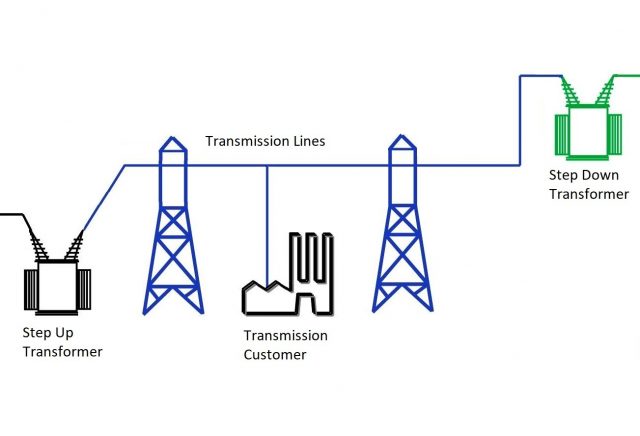A transformer is a a device that has two or more coils wound on an iron core. Transformers provide an efficient means of changing voltage and current levels, and make the bulk power transmission system practical. The transformer primary is the winding that accepts power, and the transformer secondary is the winding that delivers power. The primary to secondary voltages are related by the turns ratio of the coils. The corresponding currents are related inversely by the same ratio.
A transformer can also be defined as a device that changes AC electric power at one frequency and voltage level to AC electric power at the same frequency and another voltage level through the action of a magnetic field. It consists of two or more coils of wire wrapped around a common ferromagnetic core. These coils are (usually) not directly connected. The only connection between the coils is the common magnetic flux present within the core.
The first power distribution system was a 120 VDC system invented by Thomas A. Edison. The 120 VDC system produces a very large amount of current to supply significant amount of power. The high current caused a huge voltage drop and power losses in the transmission lines restricting the service area of a generating station. Power stations need to be located every few city blocks to overcome this problem.
The invention of the transformer by Ottó Bláthy and the concurrent development of AC power sources eliminated the restrictions on the range of transmitting power. A transformer ideally changes AC voltage level to another voltage level without affecting the actual power supplied. A step up transformer decreases the current to keep the power flowing into the transformer equal to the power flowing out of it. With this, AC power can be generated at one central location, its voltage stepped up for transmission over long distances at very low losses. The voltage will then be stepped down again for final use. Without the transformer, it would simply not be possible to use electric power in many of the ways it is used today.
In a modern power system, electric power is generated at voltages of 12 to 25 kV. Transformers step up the voltage to between 110 kV and nearly 1000 kV for transmission over long di stances at very low losses. Transformers then step down the voltage to the 12- to 34.5-kV range for local distribution and finally permit the power to be used safely in homes, offices, and factories at voltages as low as 120 VAC or 240 VAC.

